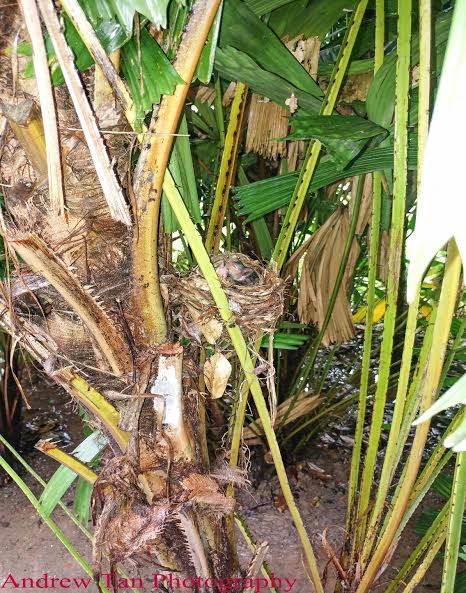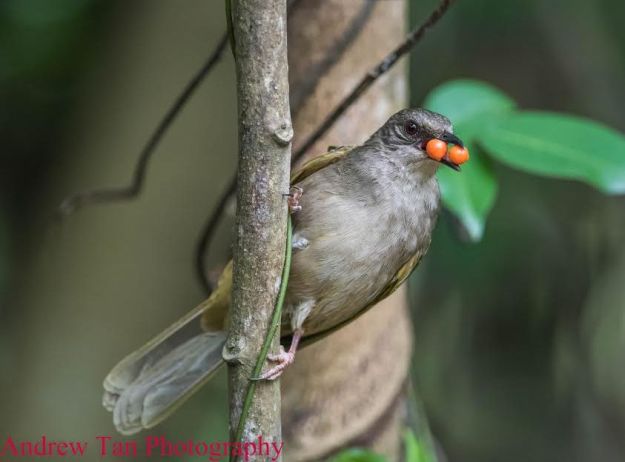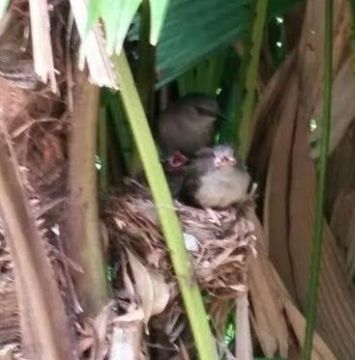Contributed by Andrew Tan

On 8 April, I took a walk along the mangroves lined Belayer Creek. This connector is named after a historic rock Batu Belayer or “Sail Rock” at the entrance of the harbor. This is one of the only two remnant mangrove patches in the south of Singapore. 60 birds, 19 fish species and 14 true mangroves have been recorded here.

I saw two Olive-winged Bulbuls, Pycnonotus plumosus, flying in and out of a palm tree. On checking I found one of them sitting on a cup nest wedged in between the fond stem and the trunk below eye level ( right). It was made of plant fiber, leaves and twigs. My joy was complete when I saw two chicks inside. They were tiny and bare and must have just hatched. The Olive-winged Bulbul is the most common forest bulbul in Singapore. They are also found in our woodlands, abandoned orchards and some nature parks.
Parent sitting on the two newly hatched chicks.
I left the nest alone for a few days and returned on 12th to check on the progress. Both chicks were doing well. They were still bare and their eyes were still closed. The parents were seen bringing back cicadas and orange berries to feed them. This varied diet was new to me as I thought that it will be mostly insects for proteins.

Besides insects the parent bird brought back berries for the very young chicks as well.
Insects like Cicadas are an important source of protein for the growing chicks
On the 15th, about a week old, pin feathers can be seen on both the chicks. Their eyes were opened and calls for food were more frequent. The parents were perched nearby the nest to make sure that no predators are around. When I got too close for comfort they will warn me with loud calls and frantic wing flapping. However instinct took over and they continued with the feeding after a while when I stayed away.
Four days to a week old chicks showing different feather growth.
Debra who lived nearby came to helped me to check on the chicks on 17th and found the fitter one standing on the rim of the nest. It looked strong and was fully covered with feathers. She reckoned that it will be fledgling soon. The other chick was still resting inside the nest and less active.

When I went there on the 19th to check, the bigger chick surprised me by flying away to the bushes nearby. I may have caused it to take its maiden flight but I am glad that it fledged. The parents were still around and were still feeding the younger chick. It took just 11 days for the first chick to fledged. Nature make sure that they do so as fast as possible to avoid being predated. Good to see another pair of our native bulbuls gracing our natural landscape. Family photo on right showing the 9 days old chick standing on the nest. Video of chick preening







